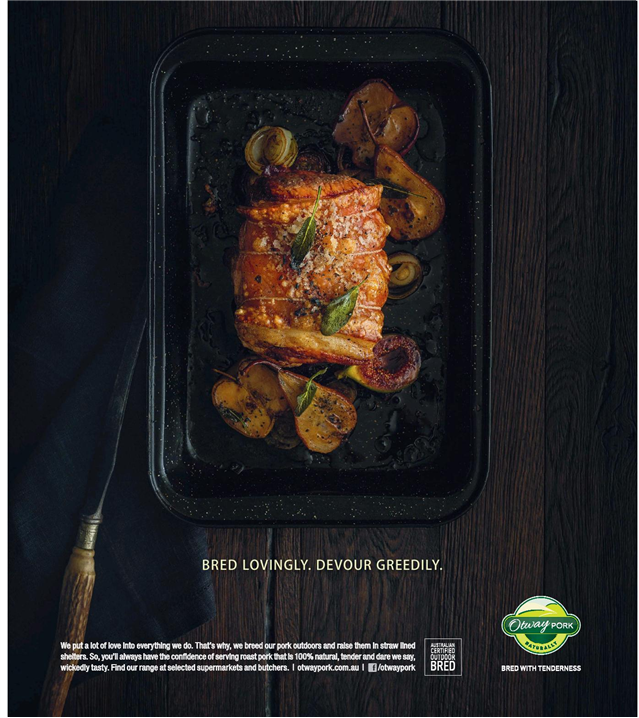Research by The Newspaper Works has reinforced the power of imagery in food advertising; The study found that quality food photos and minimal wording increases purchase intention.
The study compared print advertising for food companies Otway Pork and Tassal Tasmanian Salmon. Ad-effectiveness for both executions was tested with more than 300 consumers and the results analysed using ADvance, the ad-testing measurement tool.
This ad for Otway Pork was published in The Sunday Age on July 19, 2015:
Otway Pork kept ad content to a minimum. The stand-out image of the roast pork is supported by a headline, minimal copy, a logo promoting the brand’s free range policy and a prominent company logo.
This ad for Tassal Tasmanian Salmon appeared in The Sydney Morning Herald on the March 31, 2015:

The Tassal Salmon ad contains substantially more content. It also features a detailed recipe, a packaged product image, social media call-to-actions and a wordy headline.
Brand Perceptions
Half of the respondents (51 per cent) said the Otway Pork ad improved their awareness of the brand and 48 per cent said the same of Tassal’s ad. Both ads successfully differentiated the two brands from competitors (51 per cent for Otway Pork, 48 per cent for Tassal Salmon).
Some 49 per cent who viewed the Otway Pork ad and 46 per cent who viewed the Tassal ad said the execution made the brands more appealing to them.

Creative Diagnostics
Some 53 per cent said Otway’s ad had a great image. That’s 23 per cent more than the average print ad score. Some 36 per cent said the ad highlighted an important feature of the product. Many warmed to the product based on Otway’s ethical treatment of its livestock.
Respondents reacted negatively to the amount of content included in the Tassal ad. One in four (26 per cent) said the ad had too much information. Some 20 per cent of respondents said the execution was cluttered.









